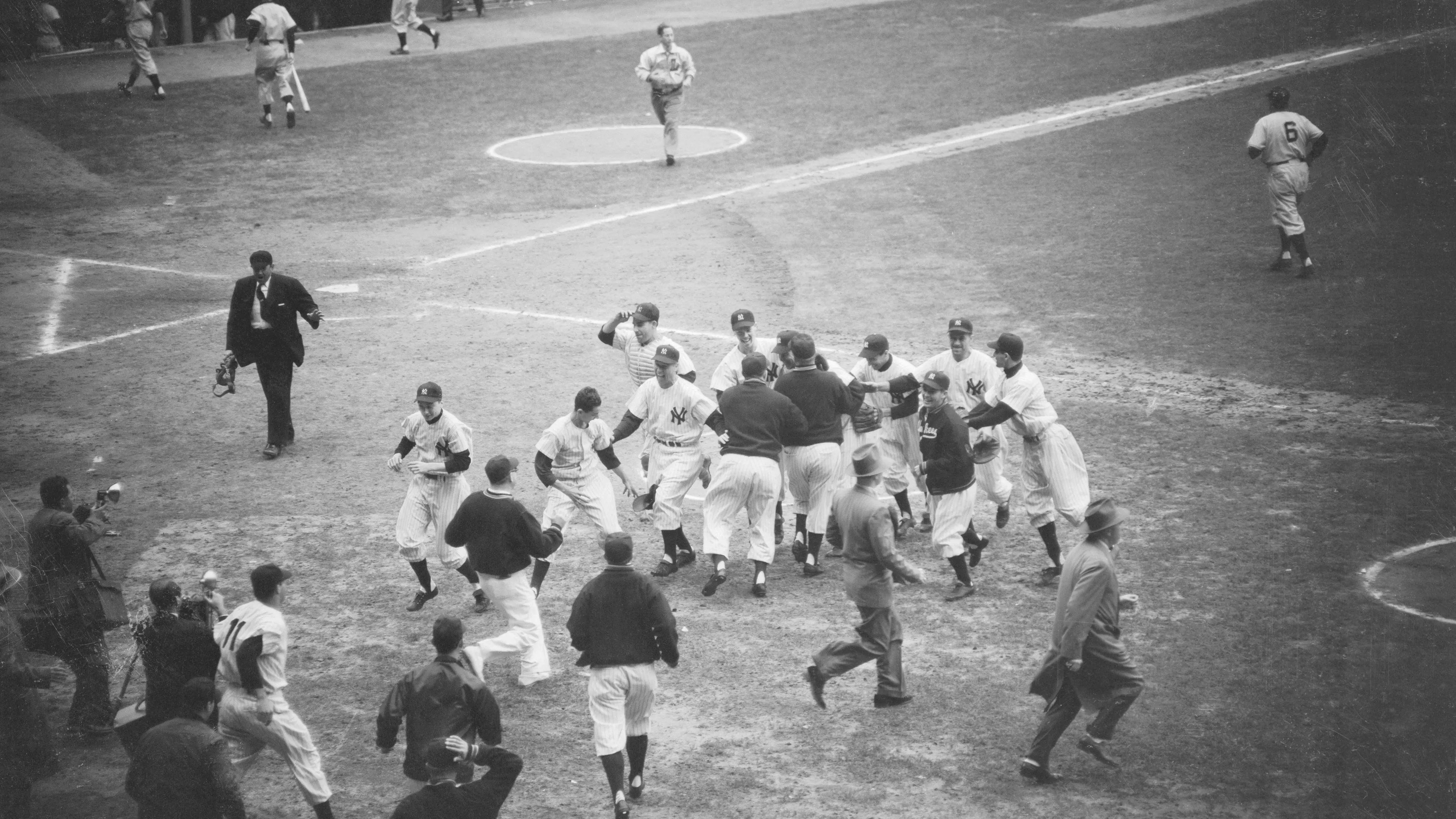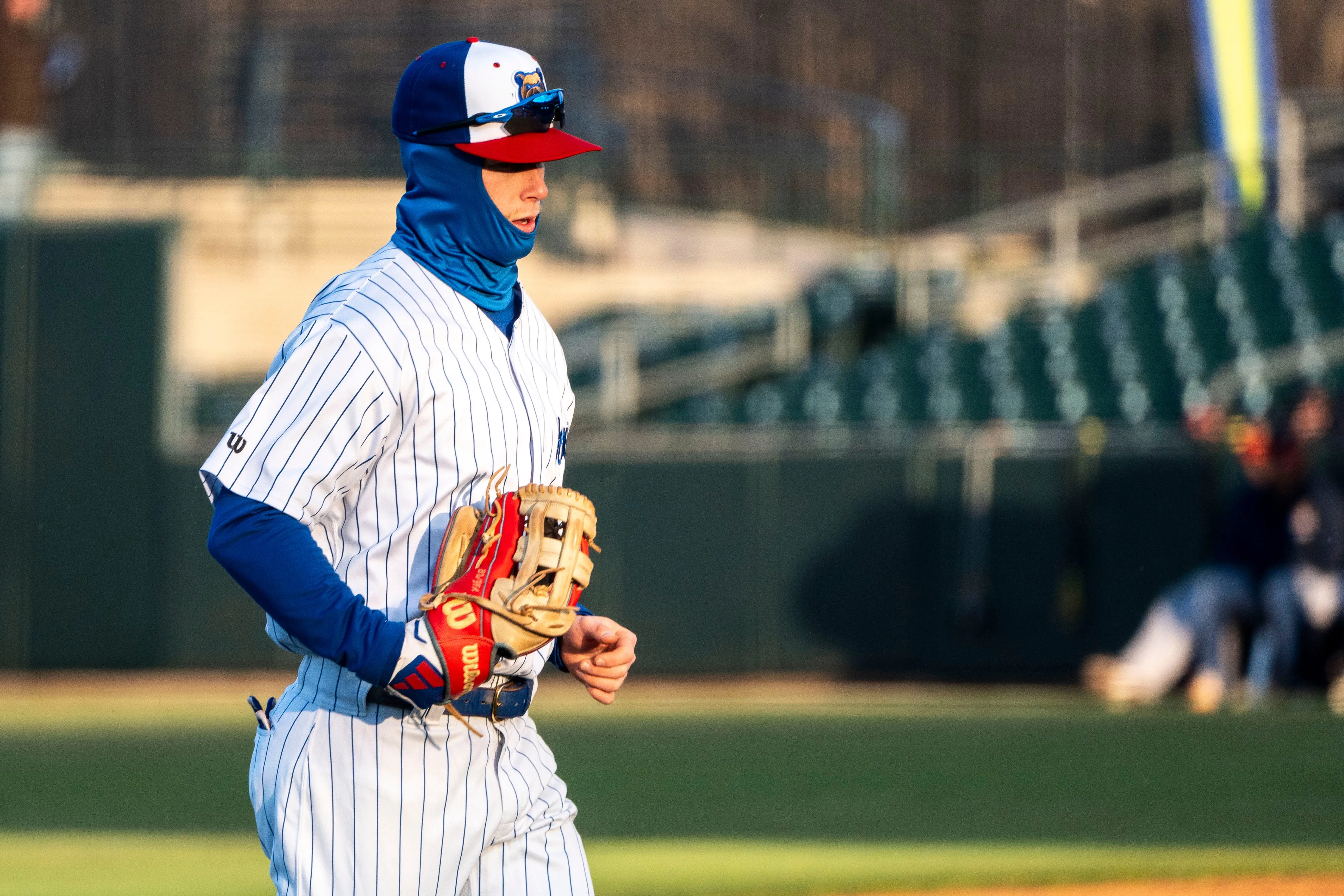Nothing appears imminent. And the thought of starting as soon as next month seems over-ambitious, if not implausible.
But Major League Baseball on Tuesday acknowledged reported discussions with the players over plans that might include opening the season with all 30 teams playing in Arizona, using spring training stadiums, the Diamondbacks’ Chase Field and possibly other sites.
Various reports suggest these games would not allow fans in attendance, would be staged in quarantine-like conditions (players housed without families at hotels and traveling only to stadiums) and that the season might include electronic strikes zones and doubleheaders with seven-inning games.
Myriad logistical considerations must be resolved before anything close to this is possible, not the least of which involves the establishing of an ability to test frequently and in high volume — along with contingencies to allow for continued league play in the case of a positive test.
But the discussions offer a glimmer of possibility, if not the start of a blueprint, for an actual season this year.
With that in mind, we take a look at how this possible plan for an abbreviated season — along with the recent MLB agreement with players on service time and other financial issues — might impact Chicago’s two baseball teams (beyond the shared advantages of being among the teams with existing infrastructure in Arizona).
Cubs Insider Gordon Wittenmyer and White Sox reporter Vinnie Duber break it down. (And don’t miss their discussion on the subject on the Cubs Talk Podcast.)
MLB
What about a shorter season and shorter games in any doubleheaders (assuming added roster spots)?
Gordon: This could work out in favor of the Cubs, who have an aging rotation, a rebuilt, uncertain bullpen and not a lot of proven depth across the entire pitching staff. Lean more on starters knowing they’ll pile up fewer innings over the season? Only seven innings to navigate with a late lead in doubleheader games? And if Jose Quintana’s annual stellar two-month run happens out of the chute, watch out.
Vinnie: Long relief, specifically, could be a concern for the White Sox with few options to rely on while starters build up to full strength. If starters are only going three or four innings early on, will the White Sox have enough to bridge the gap to the back end of the bullpen? The good news with a late start is Michael Kopech and the other pitchers returning from Tommy John surgery that the team figured to be midseason additions could instead be early season additions and provide greater starting depth.
And if they employ electronic strike zones?
Gordon: This already figured to be a boon in waiting for the Cubs, whose two-time starting All-Star catcher has only one nagging flaw in his game: receiving/framing. Eliminate the need to try to steal strikes, and Willson Contreras can use his athletic ability behind the plate any way he wants to better block pitches or to cheat on pop time to gain an even bigger advantage with his big arm. Will it help a starting staff that relies more on command for outs? Maybe. Either way it puts Contreras in position to take his All-Star game to another level.
Vinnie: It would have the opposite effect for the White Sox, who just signed Yasmani Grandal in part because of his elite framing ability. Only two catchers rated higher than Grandal in pitch-framing in 2019, a huge upgrade after James McCann ranked dead last in that category during his All-Star season a year ago. Grandal’s value goes well beyond simply pitch-framing with what he can do both at the plate and behind it. But while robotic umpires have long seemed a matter of when not if, the White Sox might have at least benefited from Grandal’s framing skills for part of his four-year contract. Now? Perhaps none of it.
If luxury tax statuses and penalty phases are frozen for a year, how does that impact a Cubs team that went over the penalty threshold last year and a White Sox team that is positioned well, especially with several projected core players signed to modest long-term extensions?
Gordon: Unlike the Red Sox, the Cubs did not dump salary to reset their luxury-tax liability schedule after last season, which looked good for the Red Sox and not so good for the Cubs two months ago. Now? It puts the Cubs at least in position to kick the can down the road into next winter — like they did last winter — and ride out the wave with this core through whatever amounts to the entirety of this season. That’s a big advantage over the midseason evaluation that might have led to an ugly trade-deadline selloff of at least one or two fan favorites. Would ownership be willing to step up next winter and spend to win in what might be the final year with the likes of Kris Bryant, Javy Baez, Kyle Schwarber and Anthony Rizzo — and the final year of the collective bargaining agreement? That might be the biggest question that arises out of the strange circumstances of this season.
Vinnie: The White Sox face the opposite problem, not trying to cram one last ride into their contention window but waiting at the starting line for the thing to open. Those extensions for Eloy Jimenez, Luis Robert and Yoan Moncada seemed genius moves at the time from a team-control standpoint. Now, one year of the team control on those contracts shrinks and could potentially get lopped off entirely. The White Sox future doesn’t get any less bright, nor does their contention window get significantly smaller. But as Cubs fans well know, one year during that window can make a big difference.
What about the fact that players on 40-man rosters who are still in big-league camps have been assured of service time for lost time on the schedule — including a full season of credit if the season is canceled?
Gordon: Other than the fact it means Kris Bryant doesn’t get screwed by the system a second time (already having lost his grievance over service-time manipulation)? Say hello to Nico Hoerner, Cub fans. Hoerner was expected to open the season at Triple-A Iowa if only because of playing-time concerns and other issues involving some of the other numbers games related to the roster of spring infield candidates. And while service time is only one small part of the equation with the rookie who debuted last fall in emergency duty, the apparent lack of a minor-league season plan, the expanded rosters and the need for more players in Arizona heat all would contribute to making Hoerner a big-league part of this team whenever the season were to start — and making the Cubs a better team in the process.
Vinnie: Allow me to discuss the potentially ridiculous case of Luis Robert, who got a contract extension in January that keeps him under club control through the 2027 season. He’s yet to accrue a single day of major league service time, and if there is no 2020 season, he won’t get any service time this year, either. That chops one full year of team control off the contract, already stinging the White Sox a little. But how about this dispatch from an alternate future? If there is no season in 2020 and the White Sox had opted to pull a Cubs and delay Robert’s debut by a few weeks into the 2021 season, they could have controlled him for as long as they do now for many millions less.
Beyond what the proposed conditions might mean for the rookies, any bold predictions about how this plan might impact others on the roster in a way that might even get into Cy Young or MVP consideration?
Gordon: Two words: Yu. Darvish. The four-time All-Star finished last year with one of the most dominant second halves in the majors, and early indications this spring suggested he was poised to pick up where he left off. But remember, for a guy who has earned four All-Star selections, Darvish has been hard-pressed to put together a full, dominant season for various reasons during seven seasons in the big leagues. He has put together several big halves of seasons. A half-season in 2020 might be built for him — maybe even a Cy Young push.
Vinnie: Not sure if he will end up in the AL Cy Young conversation, but a shortened season would seem to present an opportunity for Michael Kopech and for the White Sox, who would have the ability to use him much differently than they were planning to in a normal season. Kopech is healthy after a year-plus spent recovering from Tommy John surgery, but he still hasn’t thrown more than 134.1 innings in a pro season, the reason the White Sox are cautious about his workload. But with fewer games and fewer innings to throw, Kopech might not start the season in the minors, and workload might not be as big a concern. The worry that he might approach his limit when games got really meaningful in September and maybe October might get thrown out the window, allowing Kopech to not just pitch in those crucial games but perhaps pitch at full go in dominating, fireballing fashion.
Click here to download the new MyTeams App by NBC Sports! Receive comprehensive coverage of your teams and stream the White Sox easily on your device.


